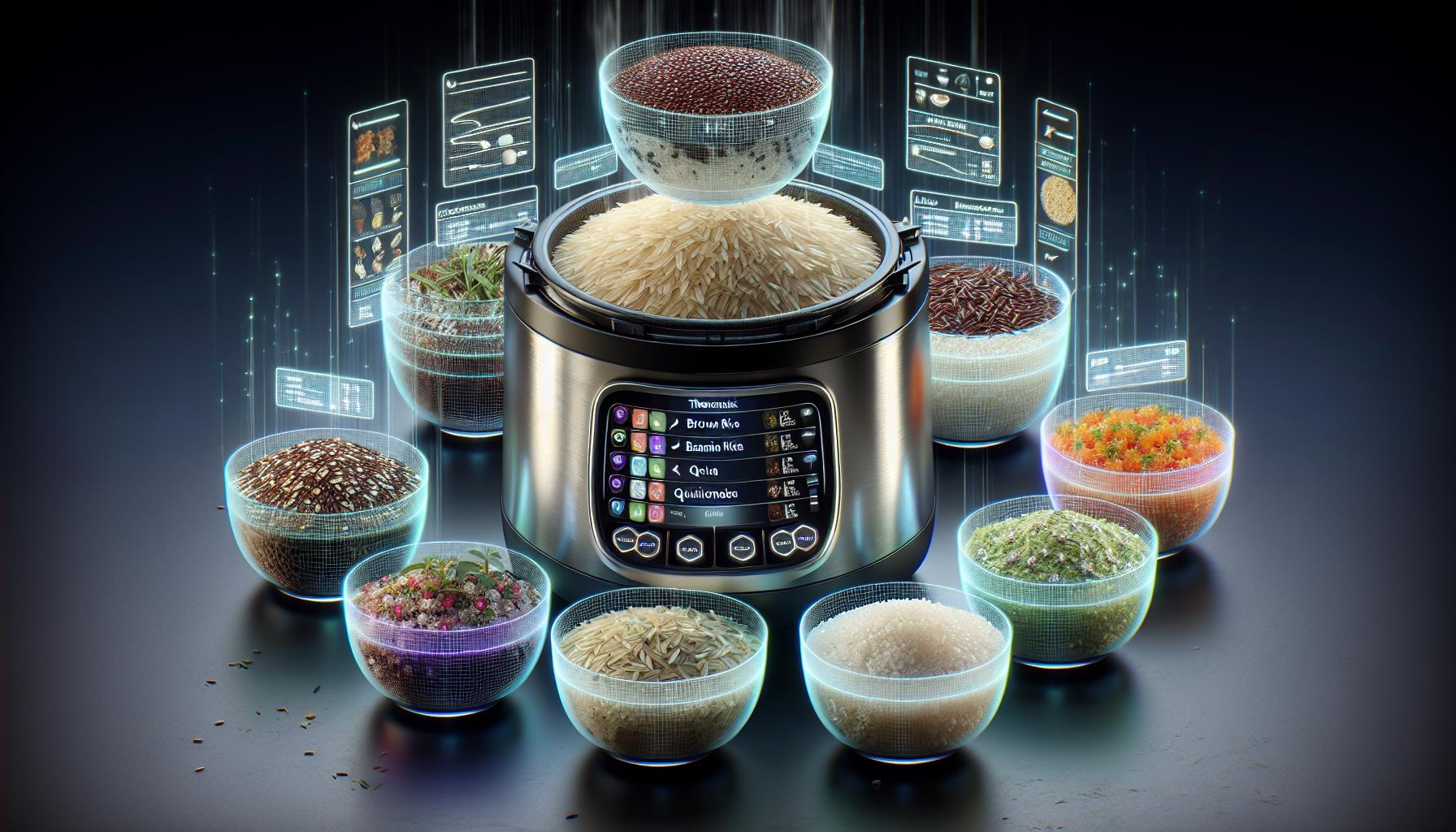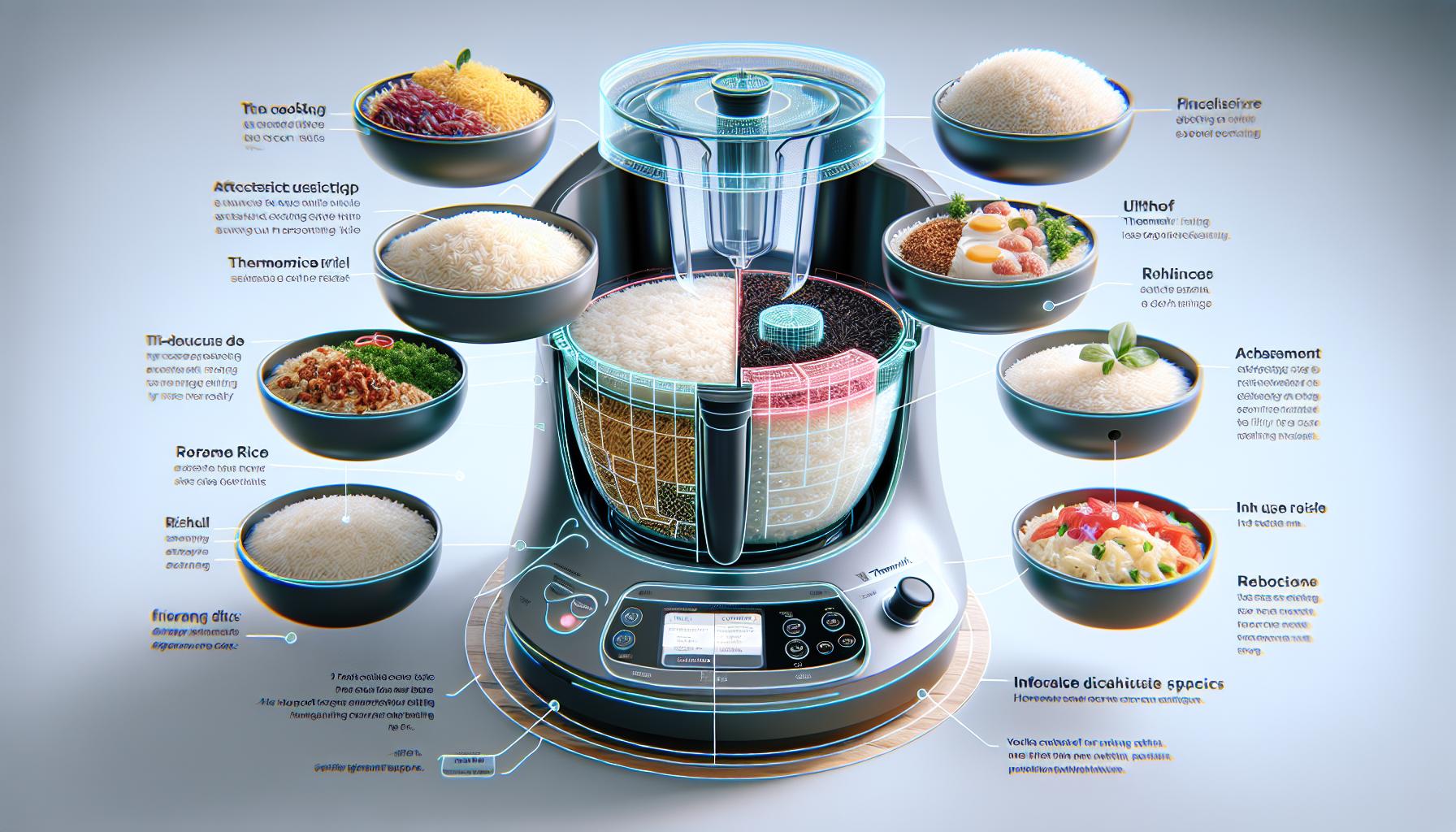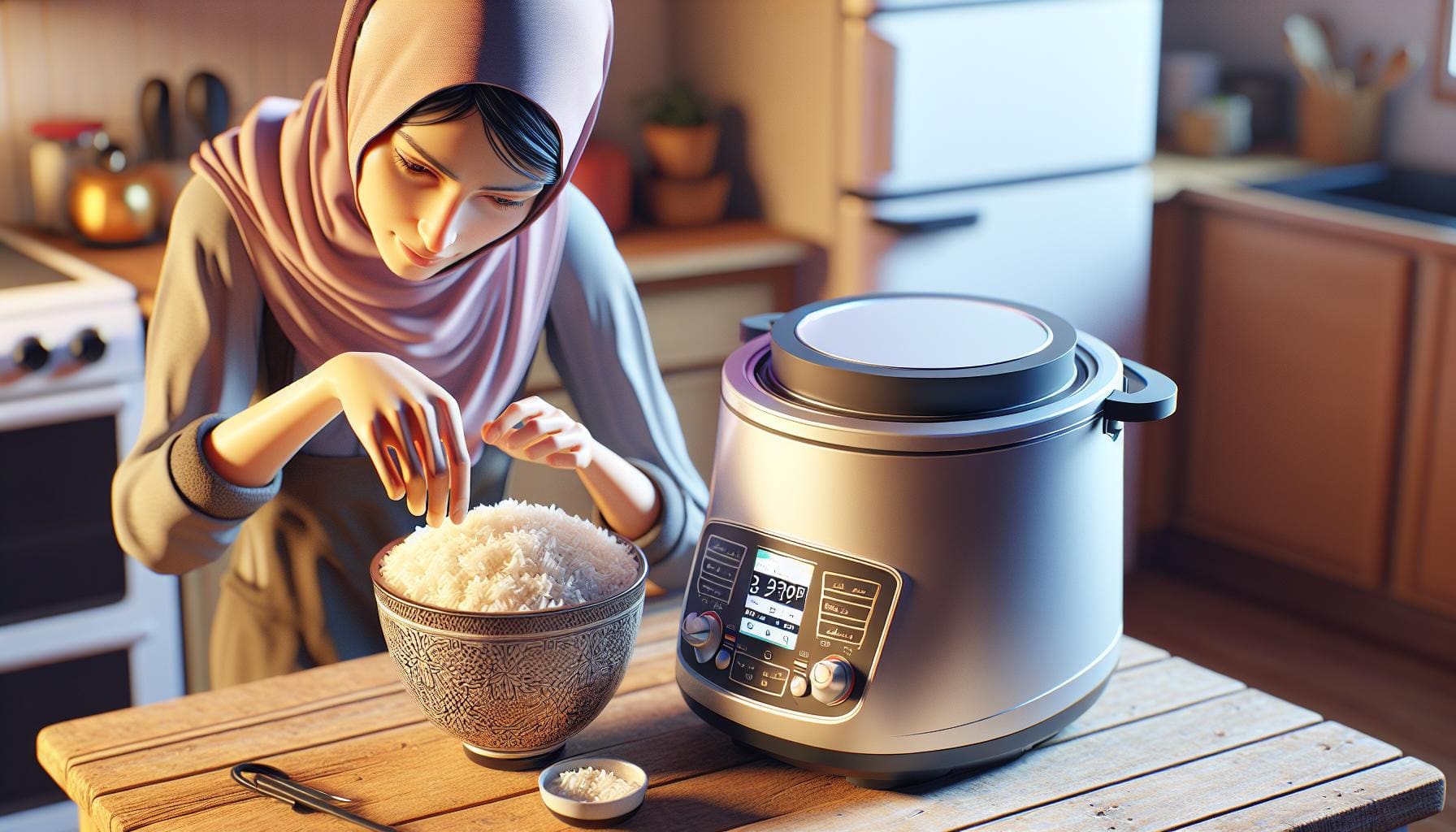So, you’re ready to unlock the full potential of your Thermomix by mastering the art of using the rice cooker mode. Whether you’re a seasoned Thermomix enthusiast or just dipping your toes into the world of multifunctional cooking appliances, understanding how to utilize the rice cooker mode effectively can elevate your culinary game to new heights.
With Thermomix’s innovative rice cooker mode, preparing perfect, fluffy rice becomes an effortless task. Gone are the days of constantly monitoring the stovetop or worrying about burnt grains at the bottom of the pot. By following a few simple steps and utilizing the precise settings of the Thermomix, you’ll soon be enjoying flawlessly cooked rice with just the touch of a button.
Join us as we delve into the intricacies of using the rice cooker mode on Thermomix, unraveling tips, tricks, and techniques to ensure that your rice dishes turn out consistently delicious every time. Let’s embark on this culinary journey together and unleash the full potential of your Thermomix appliance.
Understanding the Rice Cooker Mode on Thermomix
When it comes to utilizing the Rice Cooker mode on your Thermomix, understanding its functionalities and intricacies is key to achieving perfectly cooked rice every time. Let’s delve into the specifics to help you make the most out of this convenient feature.
For Beginners: Mastering the Basics
- Start by familiarizing yourself with the controls and settings of the Rice Cooker mode.
- Ensure proper rice to water ratio to avoid undercooked or soggy rice.
- Experiment with different types of rice to understand how each variety responds to the cooking process.
- Follow the recommended guidelines provided by Thermomix for optimal results.
For Intermediate Cooks: Enhancing Your Dish
- Explore flavor-enhancing additions such as broth, herbs, or spices to elevate the taste of your rice dishes.
- Try mixing different types of grains for unique textures and flavors.
- Adjust settings based on personal preferences to achieve the desired rice consistency.
- Master the art of layering ingredients for one-pot rice and protein dishes.
- Customize cooking times and temperatures for specialty rice varieties like sushi or risotto rice.
- Utilize the Rice Cooker mode for non-traditional dishes like rice pudding or savory rice cakes.
- Experiment with advanced features such as delayed start or slow cooking for complex rice preparations.
- Share your expertise with the Thermomix community to inspire others and learn new tricks.
By understanding the Rice Cooker mode on Thermomix at different proficiency levels, we can all unlock the full potential of this feature and create a diverse range of delicious rice dishes. Let’s continue to explore, experiment, and innovate in the kitchen with our Thermomix.
Setting Up Your Thermomix for Rice Cooking

For Beginners: Getting Started with Basic Settings
- Make sure your Thermomix is clean and free of any residues.
- Fill the mixing bowl with the appropriate amount of rice.
- Add water according to the recommended rice-to-water ratio.
- Select the Rice Cooker mode on your Thermomix.
- Adjust the cooking time based on the type of rice being used.
- Let the Thermomix do the work and enjoy perfectly cooked rice.
For Intermediate Users: Enhancing Flavor and Texture
- Experiment with adding broth or seasonings to the water for extra flavor.
- Consider incorporating aromatics like garlic, onions, or herbs for a fragrant touch.
- Toast the rice before cooking for a nutty flavor.
- Try mixing different types of rice for a unique blend of flavors and textures.
- Explore using coconut milk or different cooking liquids for a twist on traditional rice dishes.
- Utilize the Thermomix delayed start feature to have rice ready precisely when needed.
- Experiment with different rice varieties like jasmine, basmati, or sushi rice for diverse dishes.
- Incorporate specialty grains such as quinoa, farro, or wild rice for added nutritional benefits.
- Opt for slow cooking modes to achieve specific textures and tastes for your rice dishes.
- Explore non-traditional rice recipes like fried rice, rice pudding, or rice salads for culinary creativity.
- Share your rice cooking expertise and recipes with the Thermomix community to inspire and learn from fellow users.
Selecting the Right Rice and Water Ratio
When it comes to using the Rice Cooker mode on your Thermomix, selecting the right rice and water ratio is crucial to achieving perfectly cooked rice every time. Let’s dive into detailed recommendations for beginners, intermediate cooks, and experts:
For Beginners: Mastering the Basics
- Basmati Rice: Ideal for beginners due to its forgiving nature and pleasant aroma.
- Water Ratio: Typically, use a 1:1.5 ratio of rice to water for Basmati rice.
- Jasmine Rice: Another beginner-friendly option known for its fragrant and slightly sticky texture.
- Water Ratio: For Jasmine rice, try a 1:1.25 ratio of rice to water for best results.
- Short-Grain Rice: Offers a stickier consistency, popular in sushi and risotto dishes.
- Water Ratio: Stick to a 1:1 ratio of rice to water for short-grain varieties.
For Intermediate Cooks: Enhancing Your Dish
- Brown Rice: Known for its nutty flavor and chewy texture, a healthier alternative to white rice.
- Water Ratio: Brown rice typically requires a 1:2 ratio of rice to water.
- Wild Rice Blend: Adds a nutty flavor and interesting texture to your rice dishes.
- Water Ratio: Aim for a 1:3 ratio of wild rice blend to water for optimal results.
- Arborio Rice: Perfect for creamy risotto dishes, requires a bit more attention during cooking.
- Water Ratio: Use a 1:2.5 ratio for Arborio rice to achieve that desired creamy texture.
- Sushi Rice: Master the art of making sushi rice, with its unique vinegar seasoning.
- Water Ratio: Precision is key, aim for a 1:1 ratio of rice to water for sushi rice.
- Forbidden Black Rice: A high-end option with a nutty flavor and striking dark color.
- Water Ratio: Experiment with a 1:2.5 ratio to unleash the unique flavors of forbidden rice.
- Basmati and Jasmine Blend: Combine these aromatic rice varieties for a fragrant and elegant touch to your dishes.
- Water Ratio: Adjust to a 1:1.75 ratio to achieve the perfect balance of textures and flavors.
Customizing Settings for Different Types of Rice
Grains vary in their cooking requirements, and understanding how to customize settings for different types of rice can significantly impact the outcome of your dish. Whether you’re a beginner looking to master the basics, an intermediate cook seeking to enhance your creations, or an expert keen on experimenting with advanced techniques, tailored settings can elevate your rice cooking experience.
For Beginners: Mastering the Basics
- Start with Basmati rice for its fragrant aroma and fluffy texture. Use a ratio of 1:1.5 (rice to water) for optimal results.
- Delve into Jasmine rice, known for its slightly sticky consistency. A ratio of 1:1.25 is recommended for this variety.
- Explore the simplicity of short-grain rice, perfect for sushi or creamy rice dishes, with a ratio of 1:1.1.
For Intermediate Cooks: Enhancing Your Dish
- Experiment with brown rice to add a nutty flavor and chewy texture to your meals. Use a ratio of 1:1.75 for a perfect balance.
- Incorporate a wild rice blend for a visually appealing dish with a hearty texture. Achieve best results with a ratio of 1:2.
- Opt for Arborio rice when creating creamy risottos, using a ratio of 1:2.5 for a rich and velvety finish.
- Dive into the world of sushi rice, ideal for sushi rolls and rice bowls, with a ratio of 1:1.
- Challenge your culinary skills with forbidden black rice, a strikingly colored and nutty rice variety. Use a ratio of 1:1.5 for an exquisite dish.
- Blend Basmati and Jasmine rice for a unique flavor profile that combines the best of both worlds. A ratio of 1:1.4 is recommended for this blend.
Understanding the nuances of each rice variety and customizing settings accordingly can elevate your dishes to new heights. Experiment, refine, and tailor your cooking techniques to achieve culinary excellence with the Thermomix Rice Cooker mode.
Troubleshooting Common Rice Cooking Issues

For Beginners: Mastering the Basics
- Issue: Rice is too mushy.
- Solution: Use less water next time. Follow the recommended water-to-rice ratio in the Thermomix manual.
- Issue: Rice is undercooked.
- Solution: Add a bit more water and let it cook for a few more minutes.
For Intermediate Cooks: Enhancing Your Dish
- Issue: Rice stuck to the bottom of the pot.
- Solution: Try soaking the rice before cooking and stirring it occasionally during the cooking process.
- Issue: Unevenly cooked rice.
- Solution: Ensure the rice is spread evenly in the pot and consider using the simmering basket for better results.
- Issue: Dry and clumpy rice.
- Solution: Incorporate additional ingredients like broth, coconut milk, or herbs to enhance flavor and texture.
- Issue: Excessively sticky rice.
- Solution: Combine different rice varieties or add a splash of vinegar while cooking to reduce stickiness.
Remember, adjusting the water-to-rice ratio and experimenting with additional ingredients can help elevate your rice cooking experience with the Thermomix.
Conclusion
Now armed with the knowledge to troubleshoot common rice cooking issues with the Thermomix, we can confidently navigate our way to perfectly cooked rice every time. Whether we’re beginners adjusting water ratios or intermediate cooks experimenting with different rice varieties, the tips and techniques shared in this article will help us elevate our rice cooking game. By following the manual guidelines, soaking rice, and utilizing the simmering basket, we can ensure that our rice turns out fluffy and flavorful. Embracing these suggestions and incorporating our own creative twists will not only enhance our rice dishes but also make the Thermomix an indispensable tool in our kitchen arsenal.

